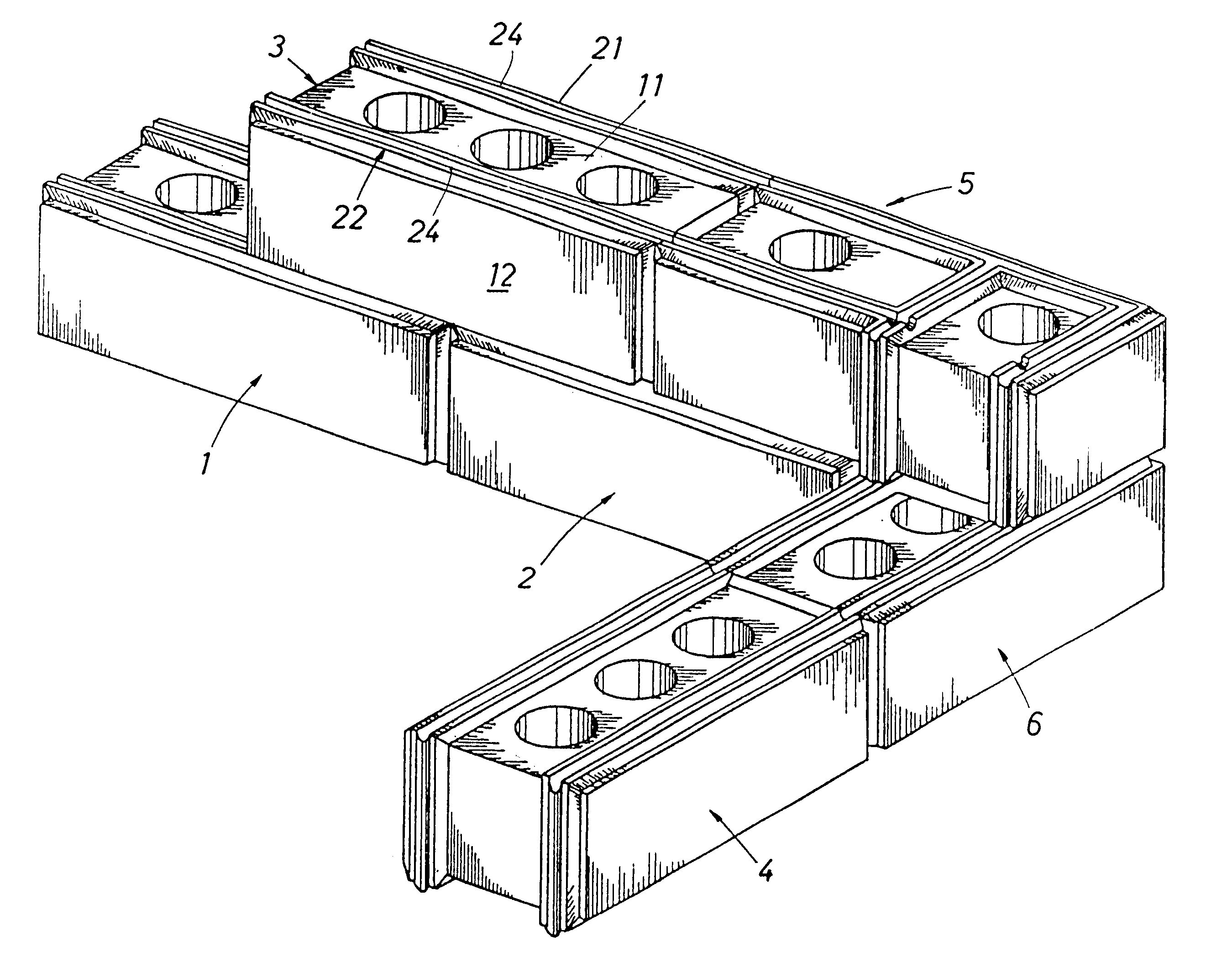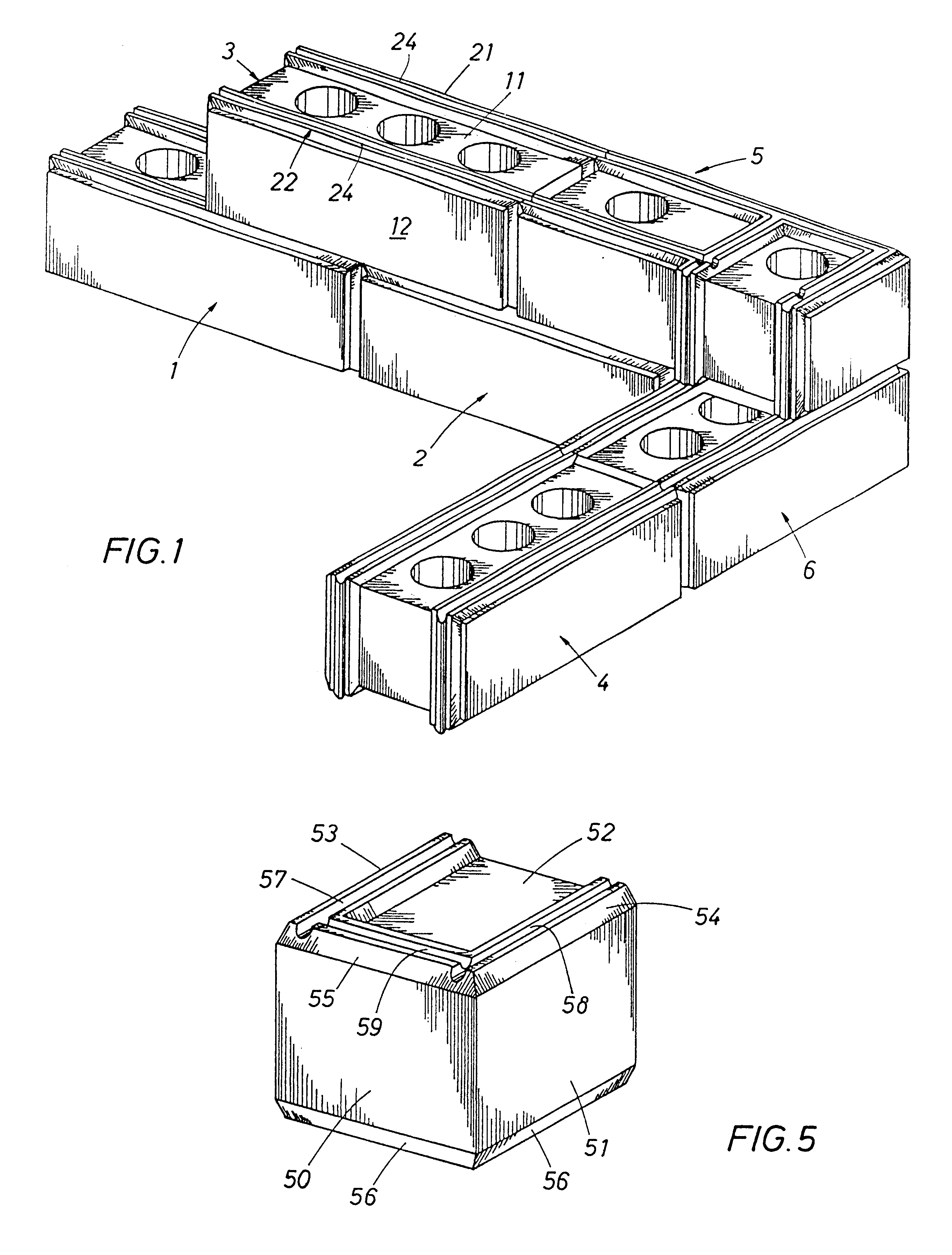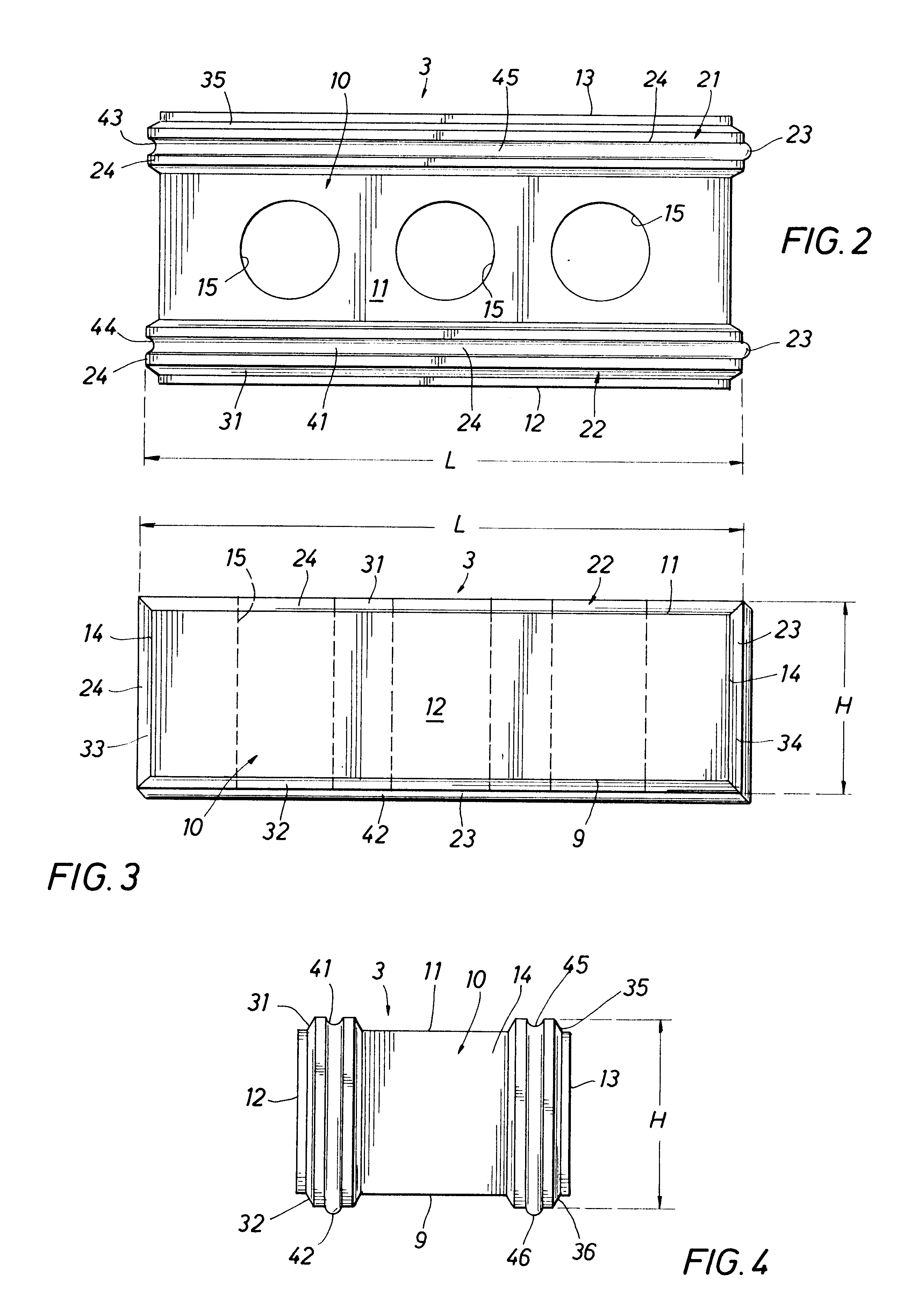Method for manufacturing a modular building block unit and construction therewith
a technology of building blocks and manufacturing methods, applied in the field of masonry construction, can solve the problems of uniform building block dimensions, easy to be incorrectly mixed or used beyond and achieve the effect of improving the useful life of the mix
- Summary
- Abstract
- Description
- Claims
- Application Information
AI Technical Summary
Benefits of technology
Problems solved by technology
Method used
Image
Examples
Embodiment Construction
Referring first to FIG. 1 for the first embodiment of the invention, there is shown the partially constructed corner of a building or other walled structure made up of several building block units, 1, 2, 3, 4, 5 and 6. As previously mentioned, the term "building unit" or "modular building unit" refers to the building block and the mounting strip which is molded to the building block. Building block units 1, 2, 3 and 4 are referred to as running course building units. Building block units 5 and 6 are referred to as corner building block units. Both types of building block units will be more fully described hereafter.
In the exemplary embodiments, the building blocks are illustrated as bricks. However, the building blocks of the present invention can be brick, stone, concrete, glass, ceramic tile, clay tile (whether used for walls, roofs, floors, etc.) or any other type of building block which is typically joined by mortar, grout or similar materials. Thus, when the term "brick" is use...
PUM
| Property | Measurement | Unit |
|---|---|---|
| Current | aaaaa | aaaaa |
| Current | aaaaa | aaaaa |
| Current | aaaaa | aaaaa |
Abstract
Description
Claims
Application Information
 Login to View More
Login to View More - R&D
- Intellectual Property
- Life Sciences
- Materials
- Tech Scout
- Unparalleled Data Quality
- Higher Quality Content
- 60% Fewer Hallucinations
Browse by: Latest US Patents, China's latest patents, Technical Efficacy Thesaurus, Application Domain, Technology Topic, Popular Technical Reports.
© 2025 PatSnap. All rights reserved.Legal|Privacy policy|Modern Slavery Act Transparency Statement|Sitemap|About US| Contact US: help@patsnap.com



